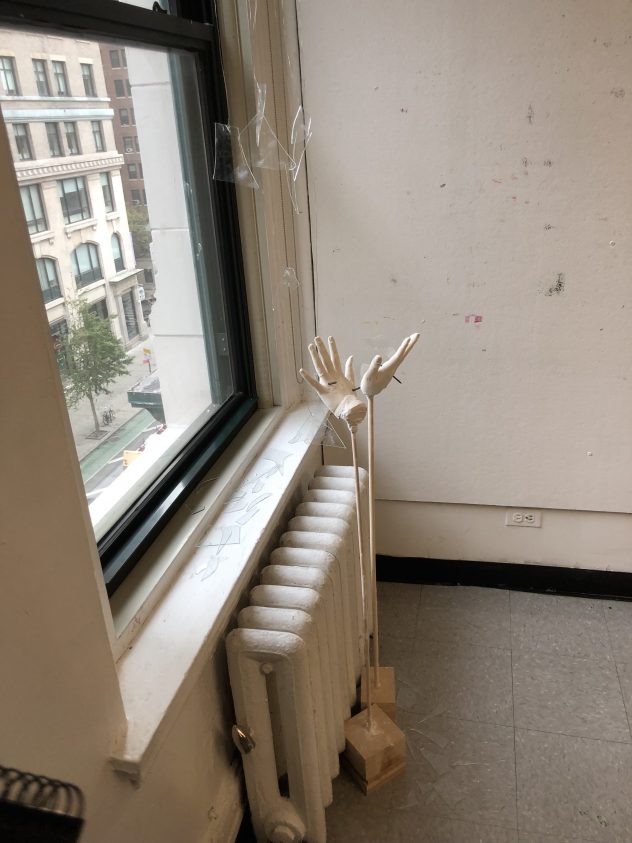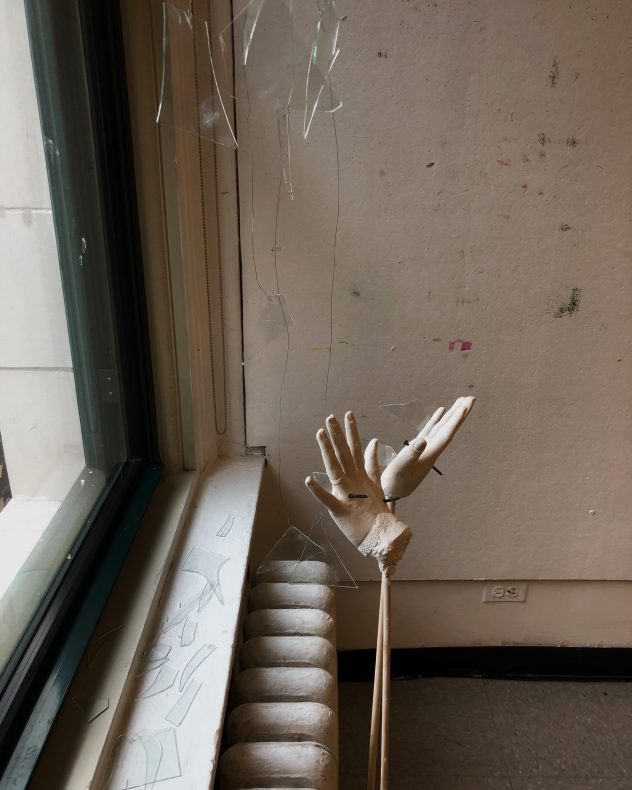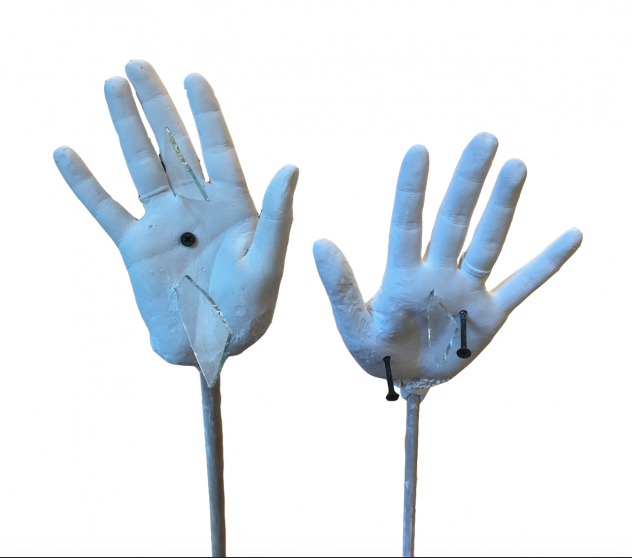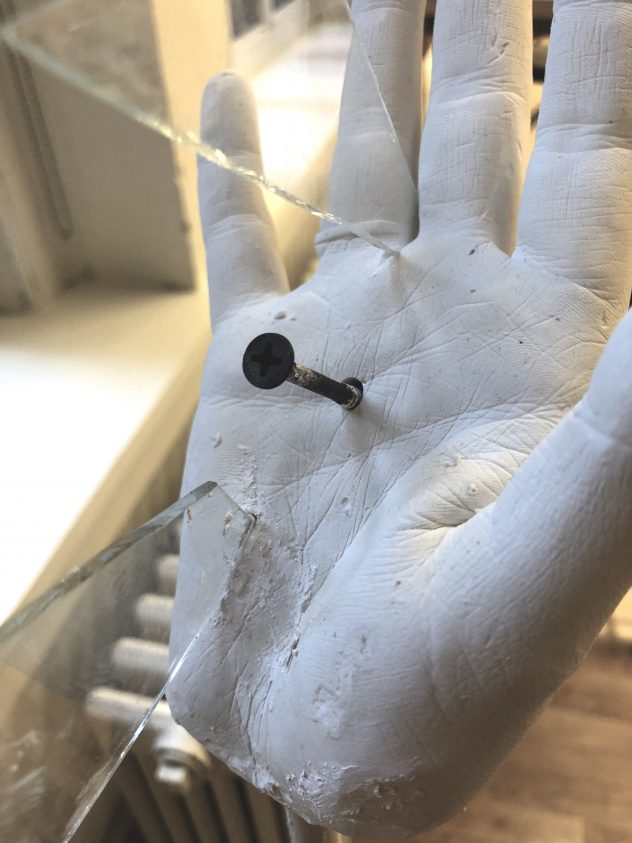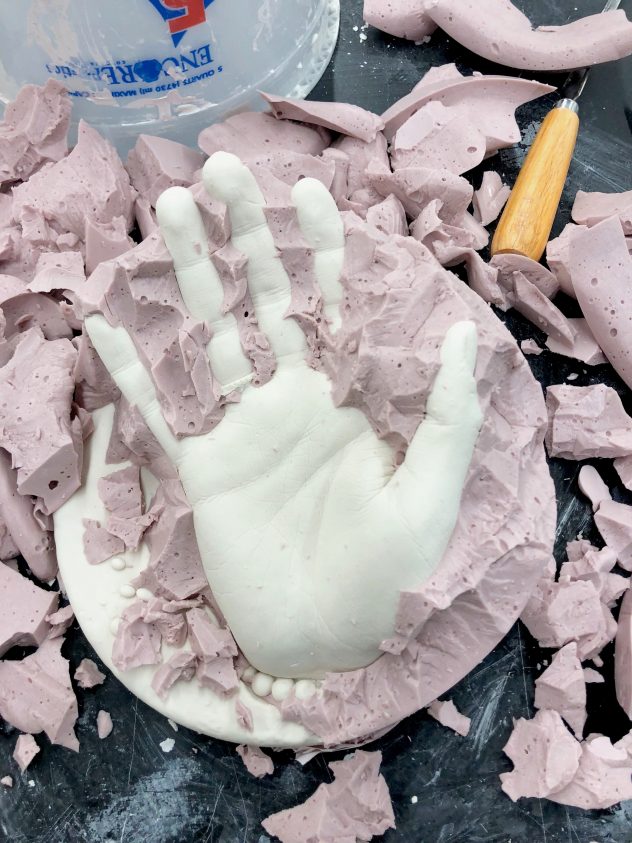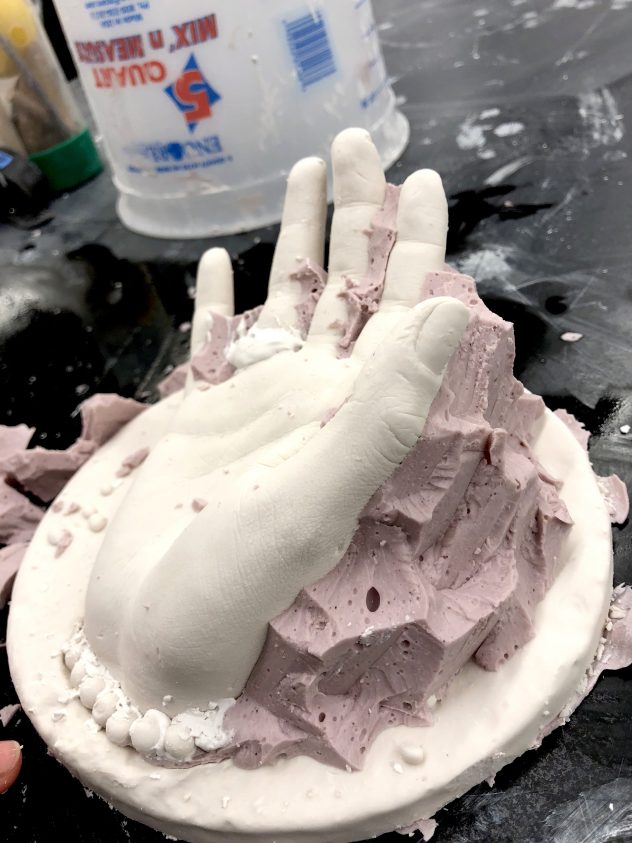Broken Spaces
Materials: Plaster Cast, Glass, Nails, Wooden Dowels, Wooden Bases, Chicken wire.
Dimensions: 46in x 9 in x 11 in
My two hands were casted, and I used pieces of glass and nails to pierce the casts.
I carefully made wholes in the plaster cast and pierced it with nails and shards of glass.
This shows my plastered hand after it was poured into the Alginate mould. After the plaster cast dried I started chipping off the pieces of Alginate to uncover my plastered hand beneath. I used the plaster cutting tools to do this.
Here is a close-up of my hand being uncovered. I chipped away the Alginate very carefully so that the plaster would not break.
Though one of the fingers did break so I had to stick it back together using plaster.
Reflection:
- Describe, using specific adjectives, the qualities and atmosphere of the habitat, or inhabitable space: Public, Dangerous, Broken, Fearful, Open, Accessible.
- What types of inhabitable spaces in the world informed or inspired the design of your project?
Open, Public spaces that are close to windows. Spaces which one is able to easily access and move around.
- Write about how you defined an interior and exterior space and curated the experience or movement of your audience in relation to your piece. Discuss how your project involved or engaged the body of the audience in the experience of the piece, as opposed to just their sense of sight.
I defined an Interior space between the hands and the window. The Hands are facing the window, there is a space created between the hands and the glass. There is an exterior space created around the hands. Behind the hands where the viewer would stand is the exterior space. The piece involves the audience as one can walk around the figure and directly feel the danger of the piece. There is glass spread all over the floor around the piece therefore the audience can directly be injured if not careful.
- What did you cast in plaster, and why?
I casted my two hands because this is the body part one uses to shield oneself. If there were broken glass coming towards one’s face, one would use their hands to shield their face.
- What skill or technique did you use to alter your cast and why? How does your substantively altered plaster cast communicate aspects of your memory through mass and texture?
I altered my cast by placing nails and glass through the hands. I used the plaster carving tools to create holes in the hands and then I placed the nails and shards of glass through the hands. This alteration directly communicates aspects of my memory as this is something which truly happened.
- Describe how you chose to display or present your work in relation to the architectural context of the piece.
I decided to place my work next to a window as it would indicate that the glass came from the window. To show that for the glass to have ended up in the hands and all around the two pieces, there something must have been thrown in from the outside. The glass must have broken and affected the hands.
- Write any further thoughts about the experience you intended to create for your audience, and discuss the strengths and weaknesses of your piece.
I intended for the audience to feel unsafe or a bit endangered. A feeling of uneasiness as one can see the glass and nails in the hands which makes one uneasy. The strengths of this piece would be the alteration of the casts as well as the position of the piece and the use of the glass in the piece. A weakness would be the dowels used as they could seem unfinished of unpolished.
